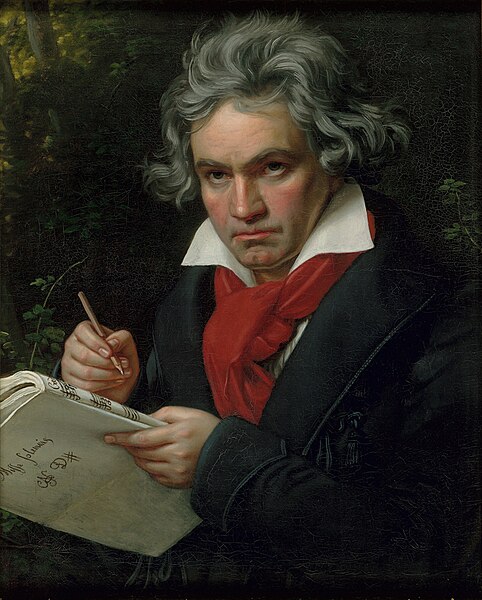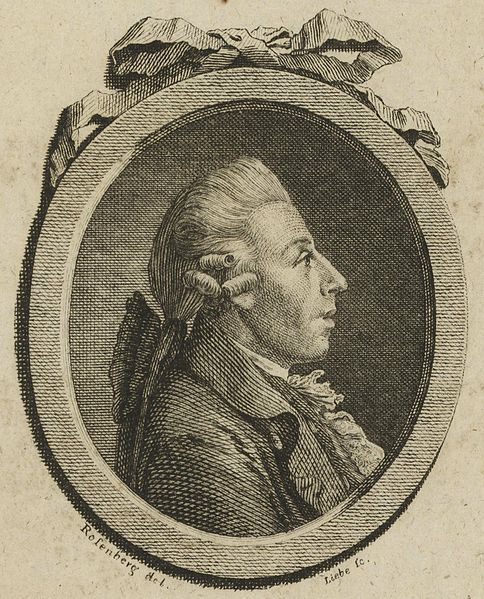Piano Sonata No. 30 (Beethoven)
Ludwig van Beethoven's Piano Sonata No. 30 in E major, Op. 109, composed in 1820, is the third-to-last of his piano sonatas. In it, after the huge Hammerklavier Sonata, Op. 106, Beethoven returns to a smaller scale and a more intimate character. It is dedicated to Maximiliane Brentano, the daughter of Beethoven's long-standing friend Antonie Brentano, for whom Beethoven had already composed the short Piano Trio in B♭ major WoO 39 in 1812. Musically, the work is characterised by a free and original approach to the traditional sonata form. Its focus is the third movement, a set of variations that interpret its theme in a wide variety of individual ways.
Beethoven in 1820
Beethoven's studio (Johann Nepomuk Hoechle, 1827)
Manuscript of Op. 109 (start of the first movement)
Ludwig van Beethoven was a German composer and pianist. He is one of the most revered figures in the history of Western music; his works rank among the most performed of the classical music repertoire and span the transition from the Classical period to the Romantic era in classical music. His early period, during which he forged his craft, is typically considered to have lasted until 1802. From 1802 to around 1812, his middle period showed an individual development from the styles of Joseph Haydn and Wolfgang Amadeus Mozart, and is sometimes characterized as heroic. During this time, Beethoven began to grow increasingly deaf. In his late period, from 1812 to 1827, he extended his innovations in musical form and expression.
Beethoven (1820)
Beethoven's birthplace at Bonngasse 20 in Bonn is now the Beethoven-Haus museum.
Christian Gottlob Neefe, one of Beethoven's first music teachers, depicted in a c. 1798 engraving
Count Waldstein, depicted in a c. 1800 portrait by Antonín Machek







